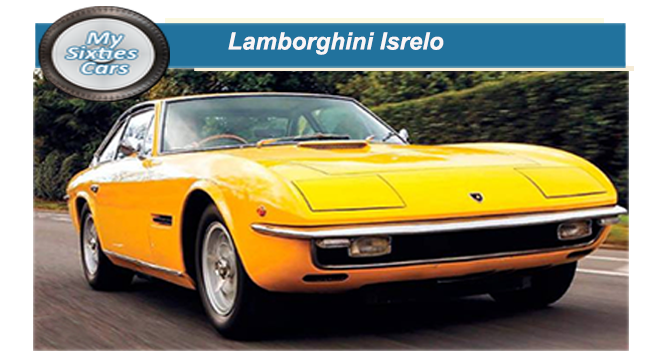
In 1968 Lamborghini launched their new streamlined grand tourer—the Islero. It was perfectly designed for epic transcontinental road trips or simply commuting in style.
The Lamborghini Islero was powered by a 3929-cc V-12 engine produced 320 horsepower; the same engine used to power the later versions of the 400GTs.
Later versi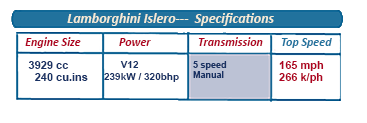 ons of the Islero, the S version had their engines rebored to reach 340 bhp - enough to deliver a top speed as high as 155 mph and 0-60 acceleration time around 7.5 seconds.
ons of the Islero, the S version had their engines rebored to reach 340 bhp - enough to deliver a top speed as high as 155 mph and 0-60 acceleration time around 7.5 seconds.
The engine drove the rear wheels through the Lamborghini 5-speed all-synchro gearbox.
Primarily based on the outgoing 400GT 2+2, the Islero body was restyled by Italian coachbuilders Marazzi to allow a little more headroom for rear passengers.
The Islero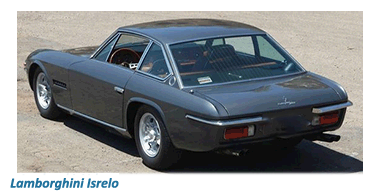 also had fuller arches to accommodate bigger tires and featured a sloping front end with pop-up headlights, not dissimilar to Ferrari 365 GTB/4 "Daytona: launched the year before.
also had fuller arches to accommodate bigger tires and featured a sloping front end with pop-up headlights, not dissimilar to Ferrari 365 GTB/4 "Daytona: launched the year before.
In 1969 an up-rated Islero GTS N offered with bigger brakes, tweaked suspension, an engine tuned with parts from the Miura S.
The Islero was based on the square-tube chassis and suspension of the 350/400, with the same wheelbase (although overall it was shorter) and a fractionally wider track to exploit advances in tire technology.
![]()
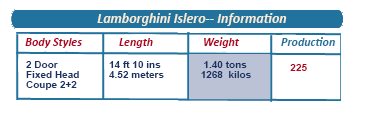 The styling was by Marazzi, a group of Touring personnel displaced when that famous Turin firm went out of business. Outward lines were almost severe, with retractable main lights and thin bumpers enhancing the clean appearance, and single curvature windows instead of the intricate glass designs of earlier cars.
The styling was by Marazzi, a group of Touring personnel displaced when that famous Turin firm went out of business. Outward lines were almost severe, with retractable main lights and thin bumpers enhancing the clean appearance, and single curvature windows instead of the intricate glass designs of earlier cars.
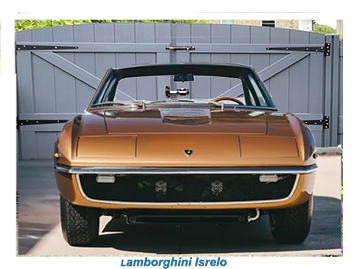 Air conditioning was now standard, in a roomier interior, which came in for wide criticism for its lack of fittings,
Air conditioning was now standard, in a roomier interior, which came in for wide criticism for its lack of fittings,
Named after the infamous bull that killed the Spanish matador Manolete in The Islero was To this day continues to appoint every new model, a name that references the sport that their renowned founder so greatly admired.
During its launch and through its production run, the Islero was overshadowed by the Espada, even though Ferruccio Lamborghini chose an Islero as his personal car,
![]()
The Islero was seen to be regarded as a `businessman's express,' with no sporting pretensions, and it was a 2+2 rather than a true four-seater.
It thus fell into a market sector well catered for by manufacturers such as Mercedes Benz, as well as the more obvious Ferraris, in particular, the contemporary Daytona.
Only 225 Is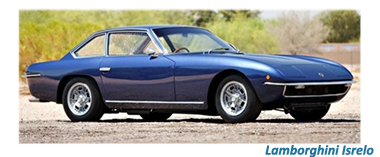 leros were ever built, five of which were exported to the United Kingdom in right-hand drive.
leros were ever built, five of which were exported to the United Kingdom in right-hand drive.
One these cars, a silver GTS, had a leading role in the film “The Man Who Haunted Himself” starring the late British actor Sir Roger Moore.
In 2010 this car, autographed by Moore on the sun visor, was sold at auction for just over one hundred and fifty thousand dollars






